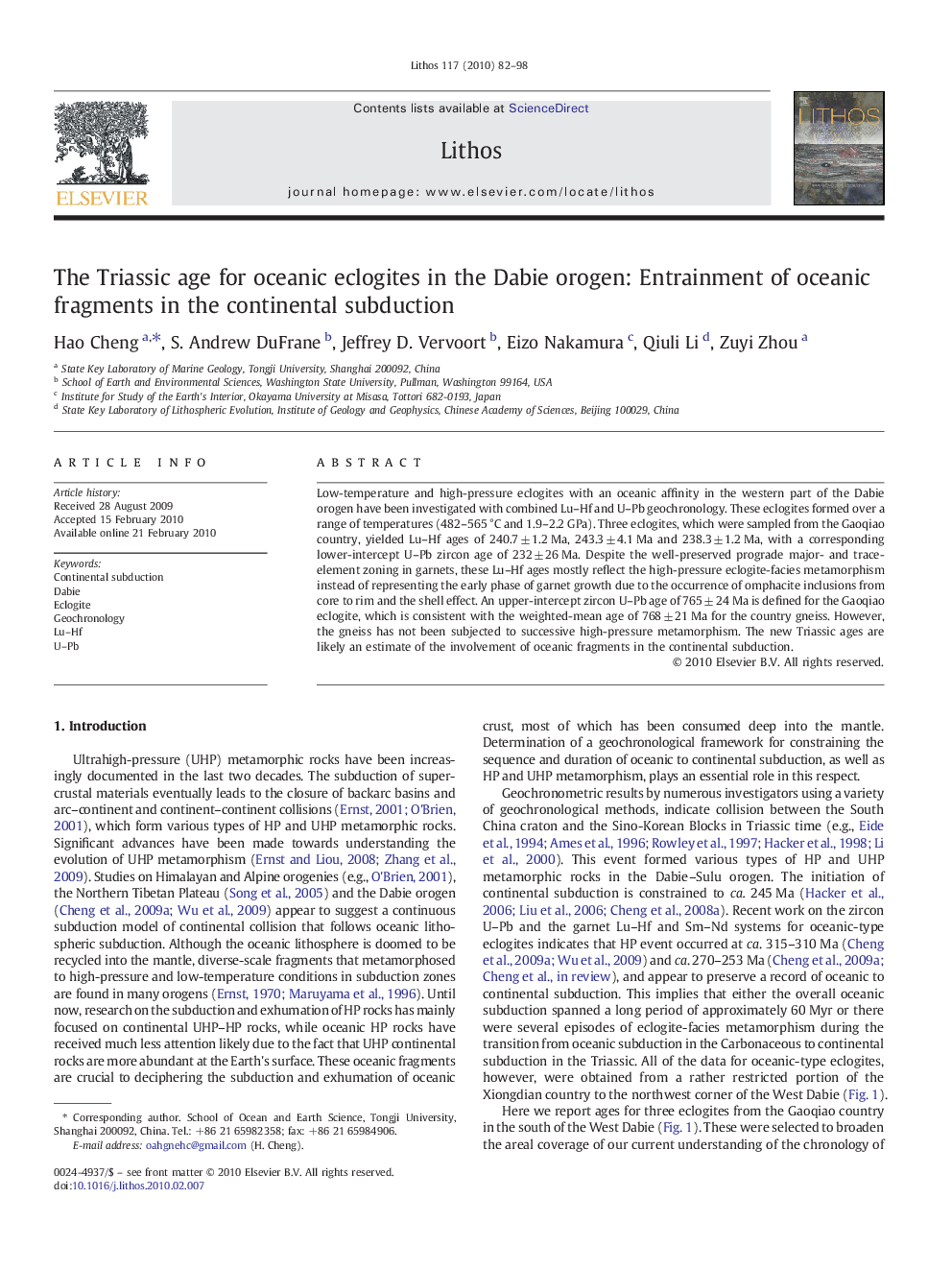| Article ID | Journal | Published Year | Pages | File Type |
|---|---|---|---|---|
| 4716980 | Lithos | 2010 | 17 Pages |
Low-temperature and high-pressure eclogites with an oceanic affinity in the western part of the Dabie orogen have been investigated with combined Lu–Hf and U–Pb geochronology. These eclogites formed over a range of temperatures (482–565 °C and 1.9–2.2 GPa). Three eclogites, which were sampled from the Gaoqiao country, yielded Lu–Hf ages of 240.7 ± 1.2 Ma, 243.3 ± 4.1 Ma and 238.3 ± 1.2 Ma, with a corresponding lower-intercept U–Pb zircon age of 232 ± 26 Ma. Despite the well-preserved prograde major- and trace-element zoning in garnets, these Lu–Hf ages mostly reflect the high-pressure eclogite-facies metamorphism instead of representing the early phase of garnet growth due to the occurrence of omphacite inclusions from core to rim and the shell effect. An upper-intercept zircon U–Pb age of 765 ± 24 Ma is defined for the Gaoqiao eclogite, which is consistent with the weighted-mean age of 768 ± 21 Ma for the country gneiss. However, the gneiss has not been subjected to successive high-pressure metamorphism. The new Triassic ages are likely an estimate of the involvement of oceanic fragments in the continental subduction.
